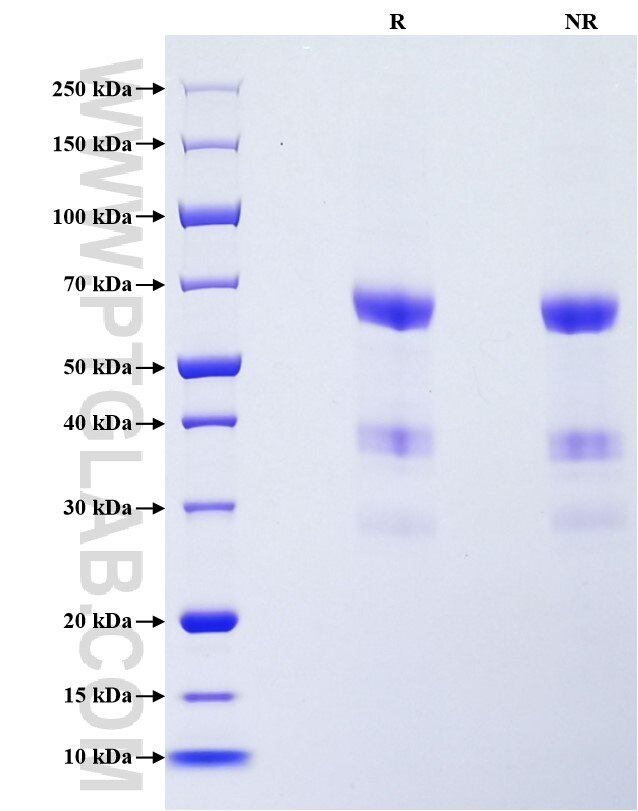Recombinant Mouse ANGPTL3 protein (His Tag)
Species
Mouse
Purity
>90 %, SDS-PAGE
Tag
His Tag
Activity
not tested
Cat no : Eg0662
Validation Data Gallery
Product Information
| Purity | >90 %, SDS-PAGE |
| Endotoxin | <0.1 EU/μg protein, LAL method |
| Activity |
Not tested |
| Expression | HEK293-derived Mouse ANGPTL3 protein Ser17-Thr455 (Accession# Q9R182) with a His tag at the C-terminus. |
| GeneID | 30924 |
| Accession | Q9R182 |
| PredictedSize | 52.3 kDa |
| SDS-PAGE | 60-70 kDa, reducing (R) conditions |
| Formulation | Lyophilized from 0.22 μm filtered solution in PBS, pH 7.4. Normally 5% trehalose and 5% mannitol are added as protectants before lyophilization. |
| Reconstitution | Briefly centrifuge the tube before opening. Reconstitute at 0.1-0.5 mg/mL in sterile water. |
| Storage Conditions |
It is recommended that the protein be aliquoted for optimal storage. Avoid repeated freeze-thaw cycles.
|
| Shipping | The product is shipped at ambient temperature. Upon receipt, store it immediately at the recommended temperature. |
Background
ANGPTL3 belongs to the angiopoietin-like protein family. ANGPTL3 is mainly synthesized by liver cells and is notably expressed in kidney podocytes. Accumulating evidences have revealed that ANGPTL3 plays a critical role in both biological processes, such as lipid metabolism, angiogenesis and haematopoietic function and pathological changes, including atherosclerosis, carcinogenesis, nephrotic syndrome, diabetes, liver diseases and so on. Thus, ANGPTL3 may serve as a potential biomarker in these diseases. Overexpression of Angptl3 or intravenous injection of the purified protein in KK/San mice elicited a marked increase in circulating plasma lipid levels. It suggests that Angptl3 regulates lipid metabolism in mice.
References:
1.Pei-Yi Chen. et al. (2021) Int J Mol Sci. 7;22(14):7310. 2.Shuang Jiang.et al. (2019) J Drug Target.27(8):876-884. 3.Ryuta Koishi. et al. (2002) Nat Genet.30(2):151-7. 4.Anna Tikka. et al. (2016) Endocrine. 52(2):187-93.
